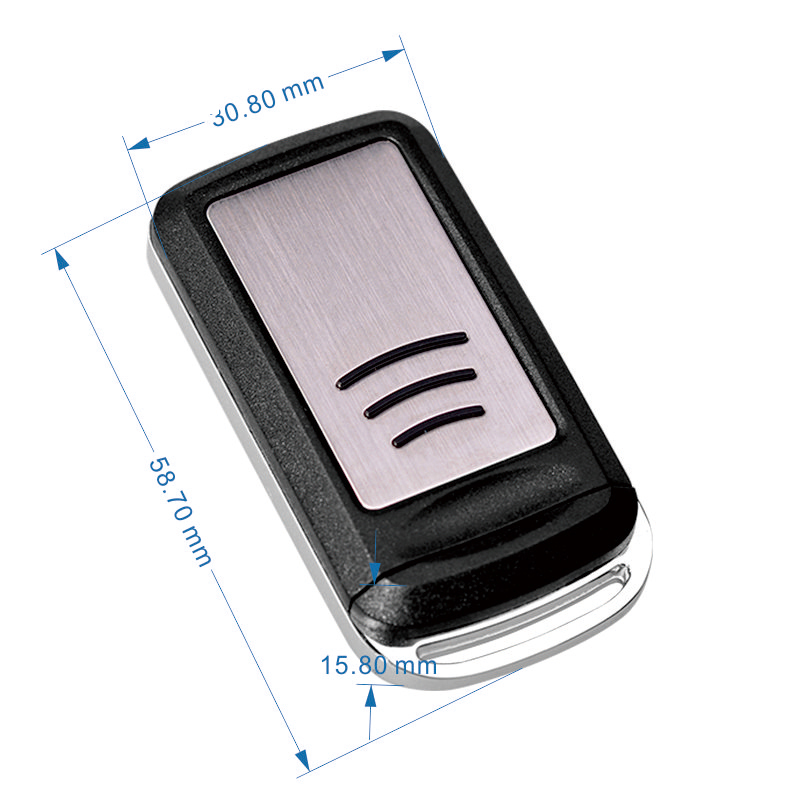An IR remote is a device designed to operate electronic equipment such as TVs, DVD players, and cable boxes. Infrared technology allows it to send signals to the device it's controlling. Upon pressing a button, an encoded message is sent out which the recipient interprets and executes accordingly. IR to wifi converter are often employed in households and businesses to handle a range of electronic devices.
Radio frequency (RF) remote controls offer an alternative to infrared (IR) remotes for controlling electronic devices. Since they utilise radio waves instead of light, they can work through walls and obstacles, and can be operated from further away. While more costly and complicated than IR remotes, they are often used in home automation systems for controlling numerous devices from one centralised spot.
Difference between IR remote and RF remote controls
RF stands for Radio Frequency waves which range from 3 KHz to 300 GHz in the frequency scale. Infrared waves range from 300 GHz to 400 THz on the frequency scale. Wavelength of infrared is between 700 nanometers and 1 millimeters. Remote control devices are typically powered by IR (Infrared) or RF frequencies. Both remote controls are used for the same applications to control remote devices, mostly televisions. Let's explore the difference between IR and RF remote controls.
Since RF remote controls have many advantages over IR remote controls as well as the convenience of replacing IR LEDs with RF transmitters and IR receivers with RF receivers, many IR remote controls have been replaced by RF remote controls. However, RF hardware is considered more complex than IR hardware. It is therefore up to the applications to choose between IR and RF remotes.
Infrared (IR) remote controls send a low-speed burst of light up to 30 feet and require direct line-of-sight to work.

You can understand ir rf converter by comparing them to flashlights. You point a flashlight in the direction you want it to illuminate. Anything outside of that ray of light is dark. In order for IR remotes to work properly, you must be able to point them directly at the unit you want to control. A lot of us have experienced how IR remotes fail when the dog sits in front of the TV and we can't change the channel until he moves.
You can operate your garage door opener from another room due to the fact that radio frequency (RF) remotes do not require line of sight to change. Even though the garage door is closed and you are outside, you are still able to open the door from outside without having direct line of sight to the receiver. Even if the receiver is obstructed by walls or other obstacles, the RF remote can still communicate with it.
You can place your AV equipment behind solid doors, cabinets, or even in another room and still have total control of its operation with an RF remote control. Because it uses a radio frequency rather than a line of sight, you don't have to point the remote at the equipment directly.
IR remote controls and RF remote controls both serve the same purpose of controlling electronic devices, but they use different methods to transmit signals. Here are some of the key differences between the two:
Transmission method: IR remotes use infrared light to send signals, while RF remotes use radio waves.
Range: IR remotes typically have a shorter range than RF remotes. IR remotes generally work best when the device being controlled is within a few meters of the remote, while RF remotes can work from much greater distances.
Interference: IR remotes can be affected by bright lighting or sunlight, which can interfere with the transmission of signals. RF remotes are less susceptible to interference.
Line of sight: IR remotes require a clear line of sight between the remote and the device being controlled, while RF remotes can work through walls and other obstacles.
Complexity and cost: RF remotes are generally more complex and expensive than IR remotes, due to the additional technology required to transmit signals via radio waves.
Ultimately, the choice between an IR remote and an RF remote will depend on your specific needs and preferences. If you need to control devices from a distance or through walls, an rf converter wifi to remote may be the better choice. However, if you are looking for a simple and affordable remote control solution, an IR remote may be sufficient.Want to know more, call Yet remote control, your best choice of remote control manufacturers.